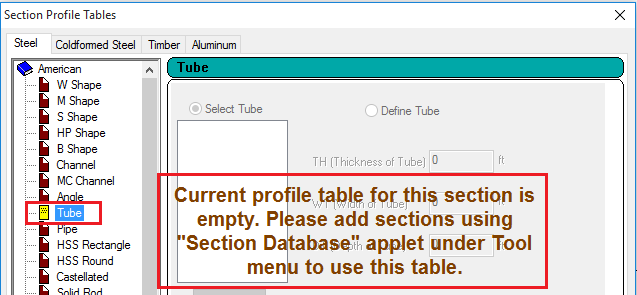

The value 12345678 is used when the calculations cannot be performed due to geometrical limitations or calculations are out of scope. It should be below one (<1) then the check passes.

To verify the model create a table for Axial Bending check (if API WSD is included then for the check of AISC and API standard):Īll Checks have Utilization Factor parameter = (Force, Moment, etc.) / Design Strength.
Aisc 14th edition deflection full#
Note: Execute Model - Property - Map Shapes as Symmetricįrom the main menu to transform asymmetric I-beams, Channels or Rectangular tubes to symmetric for the full project. Option works within the current standard. I know many are not used to this new approach and some will say that if it’s not broke don’t fix it but I like the DA Method.
Aisc 14th edition deflection manual#
In the 14th Edition of the American Steel Construction Manual the Direct Analysis Method (DAM) is moved into the main specification from the appendix. Wizard checks if the values are defined for all materials.Ĭalculate asymmetric shapes as symmetric - minimum sizes of walls/flanges will be used to calculateĬross-section properties (area, moments of inertia etc.). Stability AISC’s Direct Analysis Method Intro.

Standard uses material data (Yield/Tensile) in calculations. If beam members are not recognized press. Data from Beam Member Finder is used automatically. Stiffener distance is used to calculate allowable shear stress:Īccording to the calculation procedure, Beam Length for Y and Z direction is required. (It means there are no transverse stiffeners). The unbraced length, taken about the strong axis of the member.īy default clear distance between transverse stiffeners are set to torsional member length. Where M1 is the smaller and M2 the larger bending moment at the ends of By default user defined option is used and Cb is set to 1 (conservative): Lateral-torsional buckling modification factor (Cb) can be calculated based on moment diagram of beam member or defined manually. To set Section Build Type (rolled or built up). To see what elements are not verified for all checks or bending checks according to AISC ASD 1989 press Preview Not Supported. To add the standard execute Standard - AISC - AISC ASD 89 (9 th, 1989) from the main menu. Note: Checks are performed for I-beams, Channels, Tee, Circular and Rectangular tubes, Circular and Rectangular bars. This Standard implements checks for the design of members for tension, compression, bending, shear and combined. an American national standard "Specification for Structural Steel Buildings" Allowable Stress Design and Plastic Design, released in July 1, 1989.


 0 kommentar(er)
0 kommentar(er)
